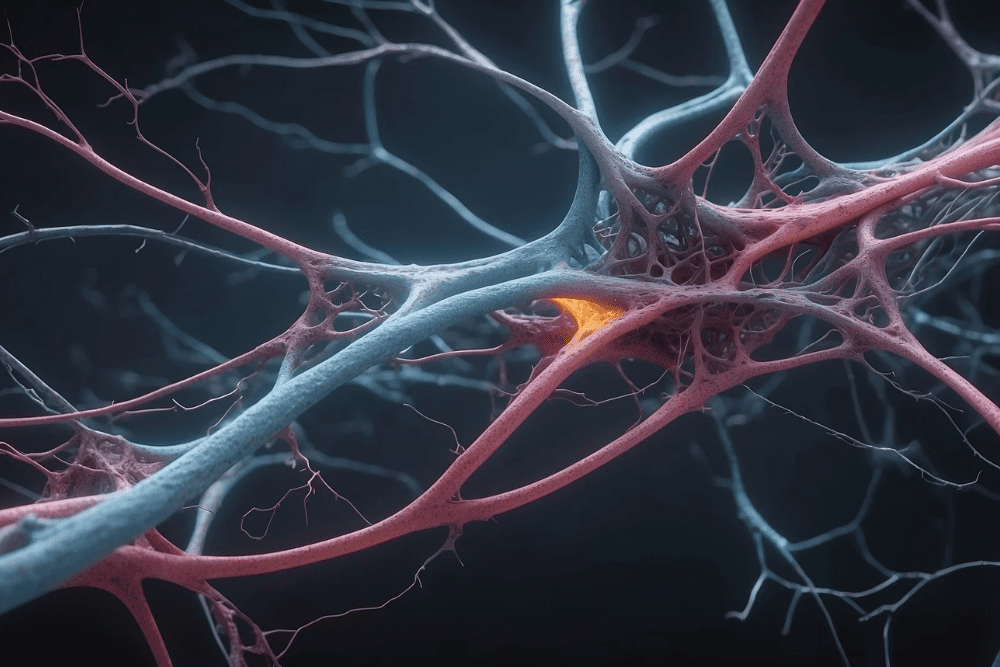When low doses of cancer drugs are administered continuously near malignant brain tumours using so-called iontronic technology, cancer cell growth drastically decreases.
Researchers at Linköping University and the Medical University of Graz demonstrated this in experiments with bird embryos. The results is one step closer to new types of effective treatments for severe cancer forms.
Malignant brain tumours often recur despite surgery and post-treatment with chemotherapy and radiation. This is because cancer cells can “hide” deep within tissue and then regrow. The most effective drugs cannot pass through the so-called blood-brain barrier – a tight network surrounding blood vessels in the brain that prevents many substances in the blood from entering it. Consequently, there are very few available options for treating aggressive brain tumours.
In 2021, a research group from Linköping University and the Medical University of Graz demonstrated how an iontronic pump could be used to locally administer drugs and inhibit cell growth for a particularly malignant and aggressive form of brain cancer – glioblastoma. At that time, experiments were conducted on tumour cells in a petri dish.
Proven concept
Now, the same research group has taken the next step towards using this technology in clinical cancer treatment. By allowing glioblastoma cells to grow using undeveloped bird embryos, new treatment methods can be tested on living tumours. The researchers showed that the growth of cancer cells decreased when low doses of strong drugs (gemcitabine) were continuously administered using an iontronic pump directly adjacent to the brain tumour.
“We have previously shown that the concept works. Now we use a model with a living tumour, and we can see that the pump administers the drug very effectively. So even though it is a simplified model of a human, we can say with greater certainty that it works,” says Daniel Simon, professor of organic electronics at Linköping University.
The concept behind a future treatment for glioblastoma involves surgically implanting an iontronic device directly into the brain, close to the tumour. This approach allows for the use of low doses of potent drugs while bypassing the blood-brain barrier. Precise dosing, both in terms of location and timing, is crucial for effective treatment. Additionally, this method can minimize side effects since the chemotherapy doesn’t need to circulate throughout the entire body.
Treatment for various cancer forms
Beyond brain tumours, researchers hope that iontronics can be applied to many types of difficult-to-treat cancer forms.
“It becomes a very persistent treatment that the tumour cannot hide from. Even though the tumour and surrounding tissue try remove the drug, the materials and control systems we use in iontronics can continuously deliver a locally high concentration of medication to the tissue adjacent to the tumour,” explains Theresia Arbring Sjöström, a researcher at the Laboratory for Organic Electronics at Linköping University.
The researchers compared the continuous drug delivery of the pump with once-daily dosing, which more closely resembles how chemotherapy is administered to patients today. They observed that tumour growth decreased with the ionic treatment but not with the daily-dose approach, even though the latter was twice as strong.
More research required
These experiments were conducted using bird embryos at an early developmental stage. According to Linda Waldherr, a researcher at the Medical University of Graz and a guest researcher at LiU, this model serves as a good bridge to larger animal experiments:
“In bird embryos, certain biological systems function similarly to those in living animals, such as the formation of blood vessels. However, we don’t need to surgically implant any devices in them yet. This demonstrates that the concept works, although there are still many challenges to address,” she says.
The researchers believe that human trials could be feasible within the next five to ten years. The next steps involve further developing materials to allow for the surgical implantation of iontronic pumps. Subsequent experiments will also be conducted on rats and larger animals to further evaluate this treatment method.
The study was mainly funded by the Austrian Science Fund, the European Union’s Horizon Europe program, the Swedish Foundation for Strategic Research, the Knut and Alice Wallenberg Foundation and the European Research Council. Theresia Arbring Sjöström, Tobias Abrahamsson, Magnus Berggren and Daniel Simon are shareholders in the company OBOE IPR AB which owns the patents related to the iontronic technology.
Article: Continuous Iontronic Chemotherapy Reduces Brain Tumor Growth in Embryonic Avian in vivo Models, Verena Handl, Linda Waldherr, Theresia Arbring Sjöström, Tobias Abrahamsson, Maria Seitanidou, Sabine Erschen, Astrid Gorischek, Iwona Bernacka Wojcik, Helena Saarela, Tamara Tomin, Sophie Elisabeth Honeder, Joachim Distl, Waltraud Huber, Martin Asslaber, Ruth Birner-Grünberger, Ute Schäfer, Magnus Berggren, Rainer Schindl, Silke Patz, Daniel T. Simon, Nassim Ghaffari-Tabrizi-Wizsy; Journal of Controlled Release; published online 11 April 2024. DOI: 10.1016/j.jconrel.2024.03.044
Written by Anders Törneholm















